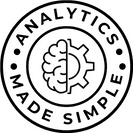How Large Language Models (LLM) like ChatGPT Are Revolutionizing the Way We Work and Play
Have you ever wondered how chatbots and virtual assistants like Siri, Alexa, and Google Assistant can understand and respond to our queries in such a human-like way? The answer lies in a technology called Large Language Models (LLMs), which have been gaining popularity in recent years for their ability to process and generate natural language text.
In this blog post, we’ll delve into the world of LLMs, exploring what they are, their various use cases, and the different platforms that provide them. We’ll also compare LLMs to another popular AI technology, Generative Pre-trained Transformers (Generative AI, GPT), and discuss why LLMs like ChatGPT are becoming increasingly popular. Let’s get started!
Table of Contents
What are Large Language Models (LLMs)?
A large language model (LLM) is a type of artificial intelligence (AI) that can generate text, translate languages, write different kinds of creative content, and answer your questions in an informative way. LLMs are trained on massive datasets of text, articles, websites, and code, which allows them to learn the statistical relationships between words and phrases. It’s like giving a computer the ability to understand and generate human-like language. These models can understand context, generate coherent responses, summarize information, translate languages, and even write creatively – all based on patterns they’ve learned from their training data.
But what about ChatGPT? is that the same thing?
Well technically, yes! ChatGPT is a type of LLM technology. Think of GPT as a single model series from OpenAI which is the company that created the model. GPT-3 is their third version, GPT-4 is their fourth, and so on, they are very well known for excelling at text generation.
LLMs and GPT are both types of large language models, but they have some key differences. LLMs are typically trained on larger datasets of text and code, which allows them to learn more complex relationships between words and phrases. This makes them better at generating text that is both coherent and grammatically correct. GPT, on the other hand, is typically trained on smaller datasets of text. This makes it better at generating text that is creative and engaging, but it may not be as accurate or grammatically correct as other types of LLMs.
Why are LLMs becoming so popular lately?
LLMs are booming because they offer a number of advantages over traditional AI technologies. LLMs are able to learn from massive datasets of text and code, which allows them to generate text that is fairly realistic and human-like. They are also able to understand and respond to natural language questions, which makes them more user-friendly than traditional AI technologies.
What are some good use cases for LLMs?
- Customer Service Chatbots: LLMs can be used to power customer service chatbots that can understand and respond to customer inquiries in a conversational manner. Many businesses are integrating LLMs into their customer support systems. These models can answer frequently asked questions, resolve issues, and provide assistance in a natural and efficient manner.
- Personal Assistants: These models power virtual assistants like Siri, Google Assistant, and Alexa. They understand your queries and provide relevant information or perform tasks like setting reminders and sending messages.
- Language Translation: LLMs can translate text from one language to another, allowing businesses to communicate with customers in different languages. This has numerous applications, such as translating website content, social media posts, and customer support interactions.
- Sentiment Analysis: LLMs can analyze text to determine the sentiment behind it, whether positive, negative, or neutral. This helps businesses gauge customer opinions and emotions, enabling them to make informed decisions and improve their products and services.
- Content Generation: LLMs can generate original content, such as articles, blog posts, creating marketing materials, or help programmers generate code.
- Summarizing Text: LLMs can summarize long pieces of text into shorter, less boring versions, saving users time and effort. This is particularly useful for research purposes or when dealing with long documents.
- Social Media Monitoring: LLMs can be used to monitor social media streams and identify relevant content, such as mentions of a brand or keywords related to a particular industry.
- Email Filtering: LLMs can be used to filter emails based on their content, prioritizing important messages and flagging spam or phishing attempts.
- Answering questions: LLMs can be used to answer your questions in an informative way, they can provide explanations, and even act as virtual tutors, enhancing the learning and educational experience.
What Are Some of The Benefits of Using LLMs:
- Improved Efficiency: LLMs can automate many routine tasks, freeing up employees to focus on more complex and creative work.
- Enhanced Accuracy: LLMs can perform certain tasks with greater accuracy than humans, such as sentiment analysis and language translation.
- Personalization: LLMs can be trained to personalize content and recommendations to individual users based on their interests and preferences.
- Scalability: LLMs can handle large volumes of data and traffic, making them ideal for applications that require processing and analyzing vast amounts of information.
- Cost Savings: LLMs can reduce costs by automating tasks that would otherwise require manual labor or human intervention.
Leading Platform Providers
Several companies offer LLMs as a service, each with its strengths and weaknesses. Some prominent players include:
- Google – You know how sometimes when you search for something online, the results are spot on? That’s because Google has been working on some seriously smart technology called BERT, which helps computers understand human language better.
- Facebook – Facebook is also doing some pretty cool stuff with language models. They’ve created something called RoBERTa, which is like a supercharged version of BERT. It’s helping Facebook improve things like chatbots and other language-based features.
- Microsoft – Microsoft is another big player in the world of language models. They’ve come up with some nice tools that help computers understand language better, like their Paraphrase Corpus and Sentence Similarity Benchmark.
- OpenAI – This is the organization behind GPT-3, GPT-3.5, GPT-4, and ChatGPT, they have been at the forefront of LLM development.
- Anthropic – Anthropic is another research org working on language models. They’ve developed a generative model that’s similar to OpenAI’s.
- Hugging Face – Last but certainly not least, there’s Hugging Face. They’re a startup that’s all about developing and applying language models. They’re offering services like natural language processing and machine translation.
Challenges & Concerns
Of course, everything is not all roses, LLMs have limitations too. Their knowledge depends heavily on training data. They lack real-world common sense. And ethical concerns exist around AI-generated content.
Here are some Ethical considerations to keep in mind:
- Bias: LLMs can extend biases present in the data they are trained on, leading to unfair outcomes and discrimination.
- Privacy: LLMs may raise privacy concerns, especially when they are used to collect and analyze personal data without consent.
- Job Loss: Some folks think that LLMs may displace jobs that were previously performed by humans, potentially leading to job loss and economic disruption.
- Accountability: It can be difficult to hold LLMs accountable for their actions and decisions, as they operate autonomously and may not have clear lines of authority.
- Transparency: LLMs may operate in ways that are difficult to understand or interpret, lacking transparency and making it challenging to identify and address errors or biases, the so-called “Black Box”.
Summary
So there you have it, folks! LLMs are truly amazing technologies that are revolutionizing the way we interact with basically everything. From chatbots that can understand our queries to language translation systems that can convert entire websites into different languages, these models are opening up new possibilities for communication and collaboration across borders and industries.
And as the smart folks in these companies continue to push the boundaries of what’s possible with LLMs, who knows what exciting developments we might see in the future? Who knows? perhaps the days of having our own personal Jarvis like Ironman are not too far away! Until then, let’s keep exploring and learning. Thanks for joining me on this long post and bearing with me in the world of LLMs!
Peace!
-J








